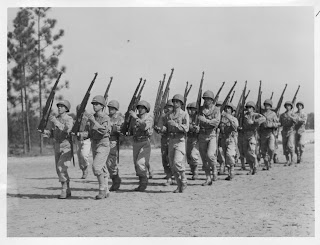Iva Toguri Joins the Chorus of Tokyo Roses
If Major Cousens could have read American newspapers, he would not have fretted about subverting the Japanese propaganda message. In the South Pacific, the several females Allied troops called “Tokyo Rose” were inadvertently foiling their own propaganda messages. A front-page story in the New Castle, Pennsylvania, News on September 17, 1943, ran an article that said Tokyo Rose was so uninformed in her war news announcements that she was actually boosting morale.
Major John Canavan from Dorchester, Massachusetts, and recently returned from Guadalcanal, said that “Rose” could not get her story straight: “She was so wrong that the boys were vastly entertained. They began to look forward to her broadcasts for the laughs.” In the October 5, 1943, Charleston Gazette troops complained about scratchy, out-of-date records. Said one GI who had enjoyed Rose’s broadcasts, “She’s beginning to droop.” These comments were documented more than a month before Toguri’s first broadcast. On November 13, 1943, Orphan Ann added her voice to the Tokyo Rose chorus.
Typically, Toguri would introduce her music with some teasing remarks that Cousens hoped would entertain Allied troops. “Hello there, Enemies! How’s tricks? This is Ann of Radio Tokyo, and we’re just going to begin our regular program of music, news, and The Zero Hour for our friends—I mean, our enemies! —in Australia and the South Pacific. So be on your guard, and mind the children don’t hear! All set? OK! Here’s the first blow to your morale—the Boston Pops playing ‘Strike Up the Band!” One of Orphan Ann’s ploys was to use the term “boneheads” when referring to Allied troops. Cousens told Ann that this was a teasing term used among troops in jocular conversations. Japanese censors had no way of knowing that the insulting-sounding word was actually Australian slang for “buddy.”
By the time Toguri began her broadcasts on Radio Tokyo the tide of the war had shifted towards the Allies. On May 7 and 8, 1942, the American Navy fought the Japanese to a standstill in the Battle of the Coral Sea. In early June, Japan and the United States fought one of history’s great naval battles—Midway. For three days, six months after the Japanese attack on Pearl Harbor, two great armadas battled for control of the Central Pacific. Fighting was fierce with neither side able to gain an advantage. The conflict swung the American way when two squadrons of American torpedo planes attacked the Japanese carrier force. Faulty torpedoes that would not detonate and lack of fighter support doomed the torpedo squadrons. Out of thirty American planes, only one survived. But the Japanese were unable to get their carrier planes properly armed to defend against next attack. A wave of American dive bombers struck with devastating accuracy. Four aircraft carriers and one heavy cruiser were destroyed. It was a death blow to the Japanese navy.
Inexorably Allied forces island-hopped their way to their primary objective—the island of Saipan. From Saipan Japan was vulnerable to bomber attacks. In February 1943, after six months of fierce fighting, U. S. Marines secured Guadalcanal and its strategic airfield. While Marines battled eastward, Allied submarines decimated Japanese supply lines. Radio propaganda broadcasts that might have demoralized a losing side came across as a charade to victorious Allied troops.
The August 2, 1944, Port Arthur News reported that Marines on Saipan favored Tokyo Rose over Bing Crosby although they felt slighted because they were not included in her “bonehead” list of Allied troops. The Cumberland Evening Times, on October 3, 1944, printed the banner headline “Tokyo Rose Broadcast Brings Hearty Laughs from Marines.” The article featured a letter written from Saipan from Pfc. Fred Theis to his parents. “We like her music, and her attempts to make us homesick are funny.... Her broadcasts raise our morale.... Her inaccurate battle reports are a real laugh…. She said 50-60 planes raided Saipan about a week after we threw back their last desperate attack.”






